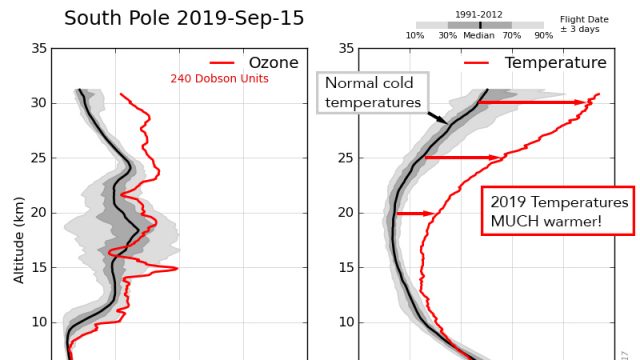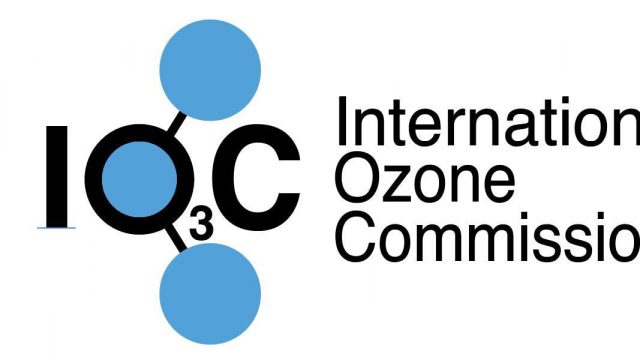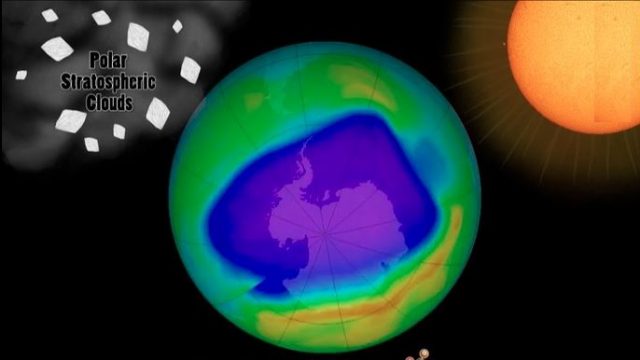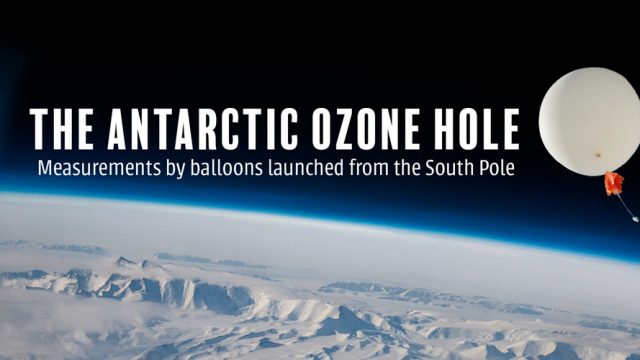As sunrise draws near at the South Pole after six months of night, we check in with the NOAA crew stationed at the South Pole to see how their year in Antarctica is progressing. LTJG Ben Kaiser, Station Chief of the Atmospheric Research Observatory at the Amundsen-Scott South Pole Station was happy to answer questions… Read More
A rare atmospheric phenomenon is occurring over Antarctica that is putting the brakes on this year’s formation of the annual Antarctic Ozone Hole. Extremely warm stratospheric air temperatures are forcing their way over the South Pole and weakening the Antarctic Polar Vortex. This type of event is called Sudden Stratospheric Warming, or SSW, and is… Read More
By Irina Petropavlovskikh, Secretary of the International Ozone Commission and a CIRES and NOAA scientist September 16th is International Day for the Preservation of the Ozone Layer, celebrating the 1987 anniversary of the Montreal Protocol on Substances that Deplete the Ozone Layer. This protocol is the first environmental treaty to achieve universal ratification. The Montreal… Read More
The annual formation of the Antarctic Ozone Hole is a dynamic process combining extreme environmental factors with manmade chemicals to destroy the ozone layer in an incredible display of catalytic destruction. While destructive chlorine damages the Ozone Layer globally, the danger is most apparent during the annual formation of the Antarctic Ozone Hole. Before the… Read More
The Ozone Layer is the name given to large concentrations of naturally occurring ozone located high in the stratosphere between 35,000 – 160,000 feet. The ozone layer is important to life on Earth because of its ability to filter out harmful doses of ultraviolet radiation from the Sun that damage DNA in plants and animals… Read More





